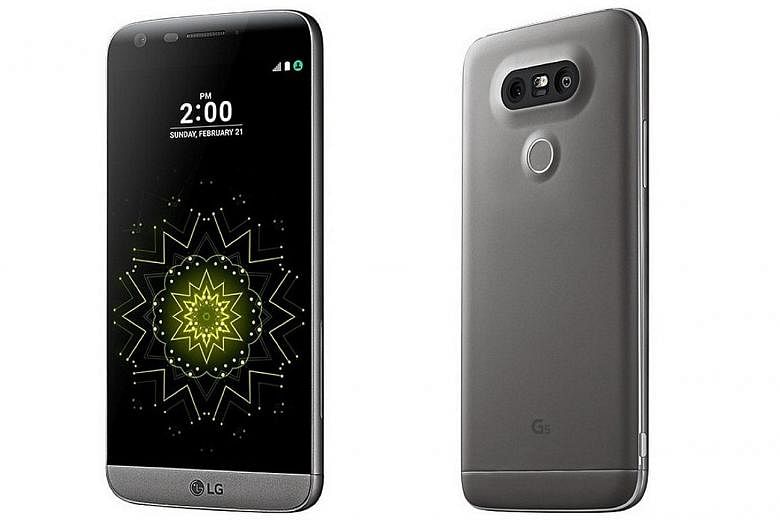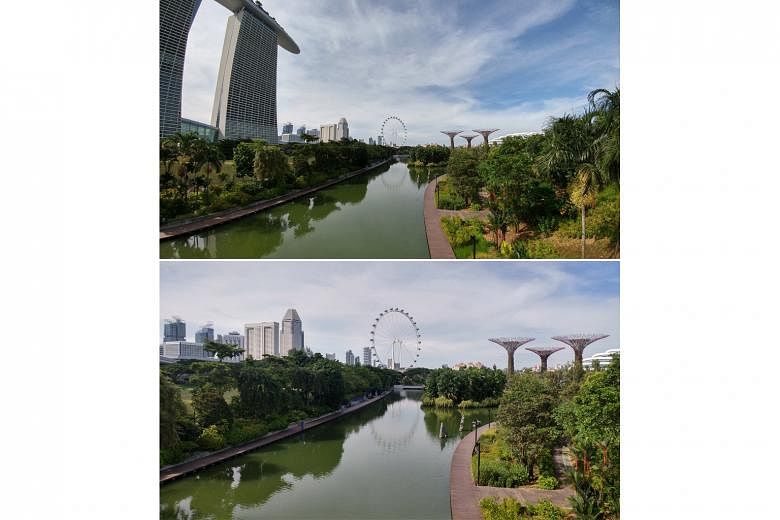The LG G5 is the first smartphone launched this year to feature a dual-camera system.
One camera uses a 16-megapixel sensor with a wide-angle 28mm lens and big f/1.8 aperture.
The second camera uses an eight-megapixel sensor but with an ultra-wide angle 10mm lens and a slightly smaller f/2.4 aperture.
-
TECH SPECS
-
PRICE: $988 (without contract)
REAR CAMERAS: 16-megapixel 28mm f/1.8; eight-megapixel 10mm f/2.4
SENSOR PIXEL SIZE: 1.12 microns
The 10mm lens' coverage is really wide, providing a 135-degree angle of view that looks almost like a fish-eye lens. Only the 16-megapixel camera has optical image stabiliser, but both cameras allow for manual controls and use laser sensors for auto-focusing.
Unlike the Apple iPhone 7 Plus, which uses both its two cameras at the same time, LG's dual-camera system uses only one camera at any one time.
The G5 does not have the zooming function of the iPhone 7 Plus. There are two icons - wide-angle and ultra-wide - in the camera app, so you tap on one of the two icons to toggle the focal length.
A simple test of putting your finger to block one lens while tapping on the wide-angle or ultra-wide icon to change focal length will prove it. You will see one of the views blocked by your finger.
The native camera app of G5 looks simple and it starts up pretty quickly, either from the start screen or the home screen when tapped.
In landscape orientation, there are the usual tools of shooting mode, flash, selfie and settings on the left side of the screen, with the shutter release, video recording and picture preview options on the right.
The more serious photographer can switch to manual mode, where you can change white balance, ISO and shutter speed. But the auto mode will probably suffice for most.
By default, there are nine autofocusing (AF) points in the middle of the screen, but you can always tap on the screen to focus on the subject.
The AF is pretty quick for a smartphone. It locks on to a focus almost instantly under bright sunlight.
Even in low lighting conditions, it takes at most two seconds to secure a focus. Image quality for both wide- and ultra-wide angle shots during daytime is impressive, with great details and wide dynamic range.
Colours look vivid and saturated. However, the edges tend to be a tad soft upon closer scrutiny, especially for the ultra-wide images.
In night landscape shots, the images tend to look overexposed, with the dark sky looking illuminated. There is also chromatic noise with some loss of details. I would recommend switching to manual mode and dialling down the exposure.
The stitching of the different frames in a panoramic image is almost perfect except for one or two instances where jagged lines are evident, but the exposures through the stitched frame do not differ by much.
Unlike the Huawei P9 and Apple iPhone 7 Plus, the G5's camera app does not have a bokeh effect function. You need to change the camera app's mode to manual and set the aperture to f/1.8 to achieve the bokeh effect.
As such, the bokeh effect is not as evident compared with the P9 and iPhone 7 Plus. However, the images look far more natural than the other smartphones in this round-up.
Trevor Tan
• Verdict: Despite being the "oldest" smartphone in this round-up, the LG G5's dual-lens camera system stood out on its own. With its ultra-wide angle lens, it caters more for landscape or travel photography.


